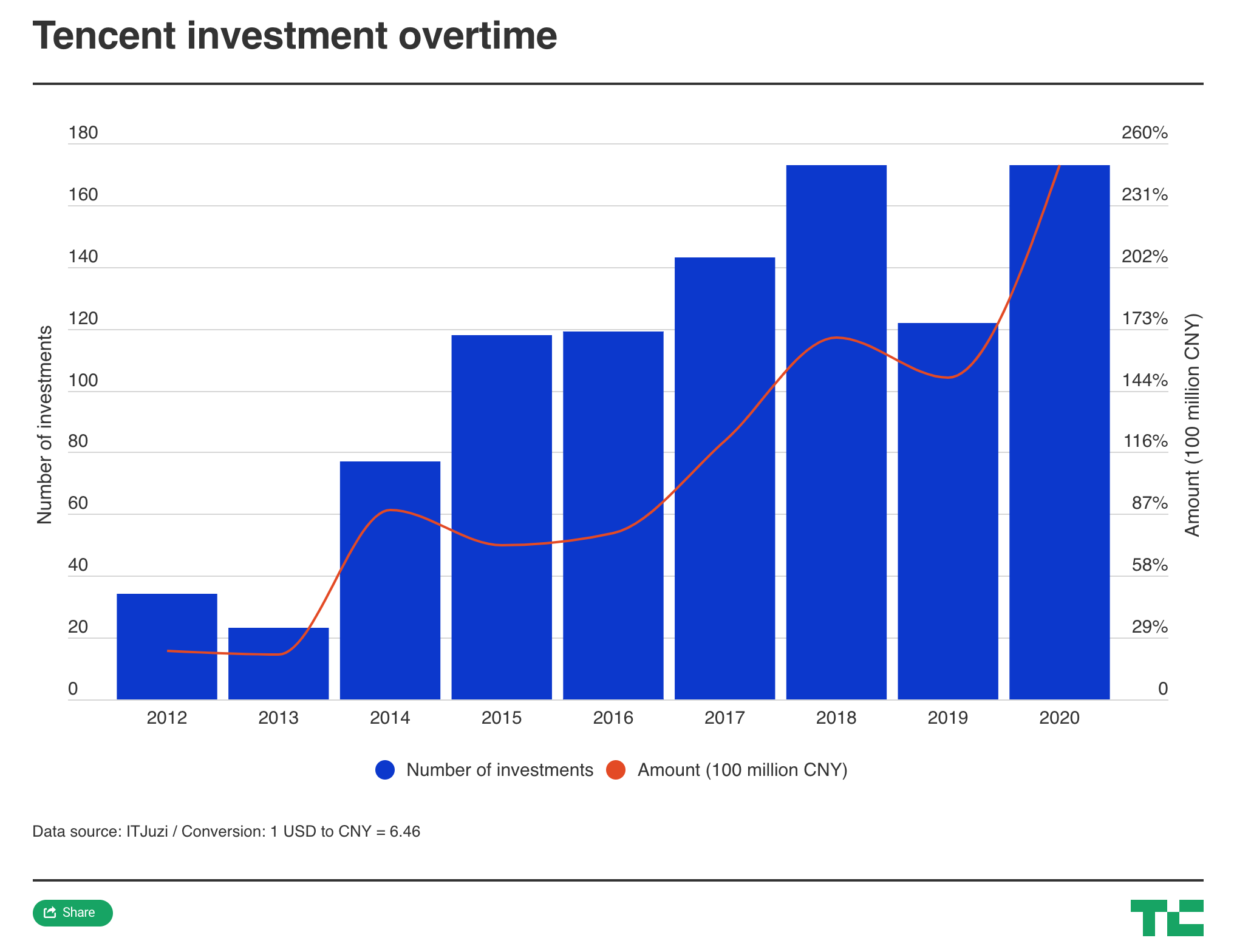- January 8, 2021
- by:
- in: Blog
Madrid-based Jobandtalent, a digital temp staffing agency which operates a dual-sided platform that connects temp workers with employers needing regular casual labor in sectors like transport and logistics, has added €88 million (~$108M) to its Series C — bringing the total raised following an earlier (2019) closing of the round to €166M. The 2009-founded startup
Madrid-based Jobandtalent, a digital temp staffing agency which operates a dual-sided platform that connects temp workers with employers needing regular casual labor in sectors like transport and logistics, has added €88 million (~$108M) to its Series C — bringing the total raised following an earlier (2019) closing of the round to €166M.
The 2009-founded startup has raised more than $290M to date over its decade+ run but describes itself as just at the beginning of a journey to make a dent in the massive and growing market for temporary work, expecting demand to keep stepping up as more sectors and processes go digital in the coming years.
Jobandtalent says more than 80,000 workers have used its platform to secure temp gigs in the last year across the seven markets where it operates in Europe and LatAm (namely: Spain, UK, Germany, France, Sweden, Mexico and Colombia); while 750+ employers are signed up to “recurrently manage a large part of their workforce”, as it puts it, including XPO, Ocado, Saint Gobain, Santander, Bayer, eBay, Huawei, Ceva Logistics and Carrefour.
It’s focused on competing with traditional staffing agencies such as Adecco and Randstad, though other similar startups are cropping up to cater to an ever more precarious temporary employment market. (And Uber, for example, launched a shift-finder app experiment called Works, back in 2019, also targeting demand for on-demand labor — but doing so in partnership with staffing agencies in its case).
Jobandtalent reports the number of workers looking for temp jobs on its platform doubling every year, while it’s grown revenue to €500M and says it’s hit positive EBITDA.
The beefed up Series C funding will be put towards expanding into more markets and doubling down on growing its existing footprint, it said today.
“We will keep expanding through Europe and will consider some additional opportunities (the US and some LatAm countries),” co-founder Juan Urdiales told us, noting that its main markets remain Spain and the UK, while its main sectors are logistics, last mile, warehousing and transport.
The lead investor in the expansion tranche of its C round is new investor InfraVia, a French private equity firm, which is putting in €30M — investing via a Growth Tech Fund it launched last year that’s focused on European b2b high-growth tech companies.
Existing Jobandtalent investors, including Atomico, Seek, DN Capital and Kibo Ventures, also participated in the Series C top-up.
Urdiales said the reason it’s taken in another chunk of funding now is because of increased opportunity for growth as the coronavirus pandemic continues to accelerate demand for temping. “The reason why we are raising more is because we are seeing a high potential now to grow even faster than expected,” he told us. “The pandemic has helped us with both workers and employers in terms of adoption of our platform.”
“Covid has accelerated the transformation of many industries. We have seen more adoption of new technologies in the last nine months than in the last five years. The staffing market is experiencing a huge transformation that will be accelerated in the upcoming years, moving from brick and mortar traditional structures to data driven platforms that will improve the experience of both workers and employers,” Urdiales went on in a statement.
“This market is really big and we are just in the beginning of our journey (even though we have been a lot of years in the market now),” he added via email, discussing whether an IPO is on the business’ roadmap in the next few years. “We think that if we continue growing at the pace that we are growing now, and we add some private investors to help us with our growth plans, we may stay private for longer.”
Jobandtalent has been through a number of pivots since kicking off more than a decade ago with the idea of using technology to streamline the messy and consummately human business of recruitment. It started out testing a number of approaches before settling on a linguistics algorithm to parse job ads and create alerts to loop in passive job seekers.
Then in 2016 it pivoted away from enterprise recruitment to focus on mobilizing hiring for SMEs — zeroing in on the growing opportunity for temp job-matching offered by the rise of gig work fuelled by smartphone apps. From there, it’s been honing tools to cater to the needs of employers that are managing large temporary workforces.
The flip side of the rapid growth of ‘flexible’ platform-based labor — and Jobandtalent says it’s eyeing a pool of some 500M temp workers globally — is something that gig platforms don’t usually like to talk about: Worker precariousness.
But that’s something this startup says it wants to help with too. A key part of the proposition Jobandtalent offers to workers is increased benefits vs what a temp might otherwise expect to get.
The average gig platform does not offer a full suite of workers rights and benefits, just as they don’t provide a contractual guarantee of future shifts, as they classify on-demand labor as ‘self-employed’ — even as, simultaneously, they apply mobile technology to tightly manage this workforce (via data, algorithms and their own devices).
This disconnect, between the level of gig worker rights and platform control, has led to a number of legal challenges in Europe — including in several of the markets where Jobandtalent operates (such as Spain, where Glovo continues to face legal challenges over its classification of delivery couriers, for example; and France and the UK, where Uber has lost a number of employment tribunals over driver status).
EU lawmakers are also eyeing conditions for gig workers — considering whether legislation is needed to protect platform workers’ rights. While some platform giants, like Uber, have already felt politically pressured to offer a level of insurance in the region.
Jobandtalent’s promise is it’s pushing for more perks for temps — leveraging the scale of its platform to get workers a better deal, including by making precarious work more steady (by lining up the next gig) and therefore less uncertain.
“All of the workers have access to the same benefits,” said Urdiales via email when we ask about how Jobandtalent’s perks are structured. “There are benefits such as advance payroll, health insurance, training courses, etc (not all the benefits are available in all countries, it depends on the level of maturity of each country).”
“We want to give any worker that starts working through Jobandtalent access to those benefits and offer a high standard employment treatment, so they have a similar status to what a perm employee has,” he added.
In a press release trumpeting its investment in Jobandtalent, new investor, InfraVia, also suggests the platform makes “temporary work a fulfilling professional step” — by defining “career plans” for temporary workers so they can “progress towards permanent and rewarding positions”.
However when we asked Urdiales what data it has on temp-to-permanent switches that have been enabled by its platform he said this is “not a common thing”.
“Employers are not looking to add workers to their perm workforces, and Jobandtalent is precisely trying to solve that for the workers, trying to give constant employment in different work assignments at different companies so they can find more stability,” he told us, adding: “The market is moving even more into a more precarious temporary employment market, and we believe that in this context a platform like the one that we are offering makes even more sense.”.
The other big carrot for workers to plug into Jobandtalent’s temp work marketplace is convenience: It takes a mobile app-based approach — offering a one-stop-shop for giggers to find their next shift, apply for the temp job (via in-app video interview), sign the contract and get paid, as well as access the touted benefits.
Its streamlining of admin around recruitment and payroll is also of course a key carrot for employers to get on board with Jobandtalent’s ‘workforce as a service’ proposition — which claims an upgraded offer (such as a CRM that bakes in analytics for tracking workforce performance in real time) vs traditional temping agency processes, as well as lower costs and increased numbers of job offers.
Its worker-to-temp job matching tech is designed to take the (temp) recruitment strain for employer customers via a proprietary quality worker scoring algorithm which it calls a Worker Quality Score (WQS).
Urdiales told us the criteria that feeds this score include attrition rate, absenteeism rate — and “some productivity metrics of the workers that we place” — when we asked for details, having found no information about the WQS on its website.
Algorithmic scoring of workers can have obvious implications for worker agency.
Nor is it without legal risk in Europe where EU citizens have rights attached to their personal data, such as access rights, and also (under the GDPR) a right to human review of any purely automated decisions that have a legal or similarly substantial impact on them (and decisions impacting access to work would be likely to qualify).
In a recent judgement, for example, a court in Italy ruled that a reputation ranking algorithm used by on-demand delivery platform Deliveroo had discriminated against workers because the code failed to distinguish between legally protected reasons for being absent from work (such as sickness or being on strike) and more trivial reasons for not turning up for a previously booked shift. (Deliveroo no longer uses the algorithm in question.)
Uber is also facing legal challenges in the Netherlands to its use of algorithms to automatically terminate drivers and to its use of data and algorithms to profile and manage drivers. While ride-hailing company Ola is facing a similar suit over its algorithmic management of gig workers. So EU courts are certainly going to busy interrogating the intersection of app-driven algorithmic management and regional data and labor rights for the foreseeable future.
The European Commission has also proposed a sweeping reform of the regional rulebook for digital services which includes a requirement for regulatory oversight of key decision-making algorithms with the aim of shrinking the risk of negative impacts such as bias and discrimination — although any new laws are likely still years out.
Asked whether Jobandtalent’s worker users are provided with their own WQS and given the chance to appeal substantial decreases in the score — including the opportunity to request a human review of any automated decisions — Urdiales said: “The platform gives them constant feedback based on the main metrics that they can affect (voluntary attrition, absenteeism, etc) with the aim to make them improve at work and consequently improve their ability to get more jobs in the future.”







